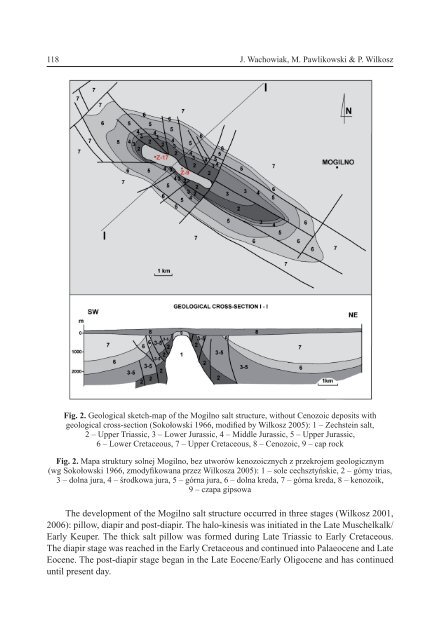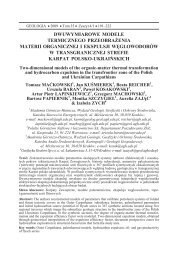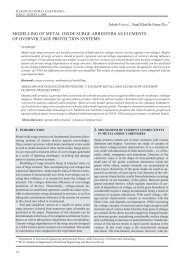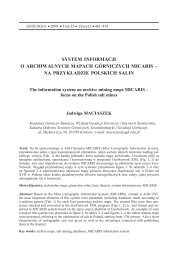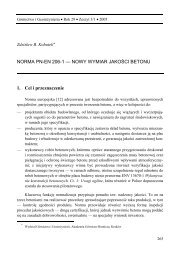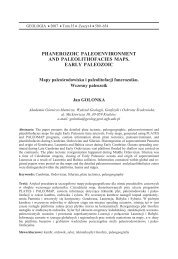You also want an ePaper? Increase the reach of your titles
YUMPU automatically turns print PDFs into web optimized ePapers that Google loves.
118 J. Wachowiak, M. Pawlikowski & P. Wilkosz<br />
Fig. 2. Geological sketch-map of the Mogilno salt structure, without Cenozoic deposits with<br />
geological cross-section (Sokoowski 1966, modi ed by Wilkosz 2005): 1 – Zechstein salt,<br />
2 – Upper Triassic, 3 – Lower Jurassic, 4 – Middle Jurassic, 5 – Upper Jurassic,<br />
6 – Lower Cretaceous, 7 – Upper Cretaceous, 8 – Cenozoic, 9 – cap rock<br />
Fig. 2. Mapa struktury solnej Mogilno, bez utworów kenozoicznych z przekrojem geologicznym<br />
(wg Sokoowski 1966, zmody kowana przez Wilkosza 2005): 1 – sole cechsztyskie, 2 – górny trias,<br />
3 – dolna jura, 4 – rodkowa jura, 5 – górna jura, 6 – dolna kreda, 7 – górna kreda, 8 – kenozoik,<br />
9 – czapa gipsowa<br />
The development of the Mogilno salt structure occurred in three stages (Wilkosz 2001,<br />
2006): pillow, diapir and post-diapir. The halo-kinesis was initiated in the Late Muschelkalk/<br />
Early Keuper. The thick salt pillow was formed during Late Triassic to Early Cretaceous.<br />
The diapir stage was reached in the Early Cretaceous and continued into Palaeocene and Late<br />
Eocene. The post-diapir stage began in the Late Eocene/Early Oligocene and has continued<br />
until present day.


